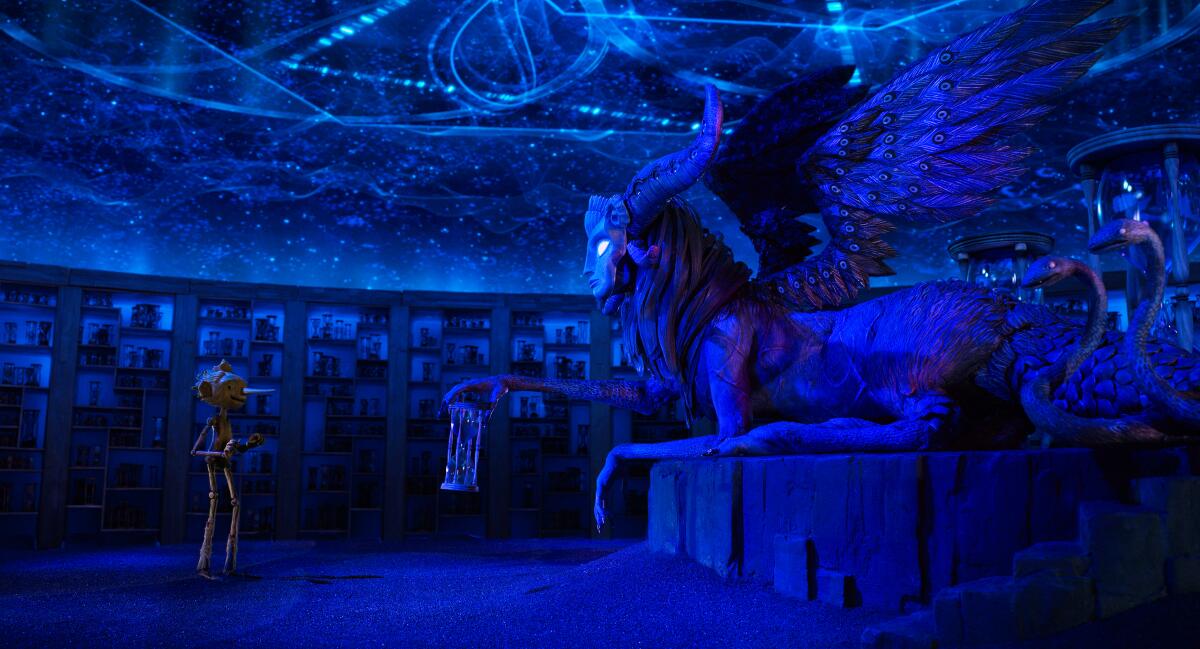A perfectly imperfect boy makes the perfect choice

- Share via
The visual spirit of “Guillermo del Toro’s Pinocchio” is lifted by the imperfections of its stop-motion animation, or what animation supervisor Brian Leif Hansen describes as an “imperfectly perfect” approach. “It means to have everything look really great but it doesn’t have to be straight up and down and smooth.” The mantra gave animators a bit of free will in reimagining Carlo Collodi’s classic novel with brilliant detail without an overtly, flawless feeling — an impression that subliminally infuses Del Toro’s twisting narrative. This rings especially true for when Pinocchio (voiced by Gregory Mann) is stuck in the land of the dead and Death (Tilda Swinton) holds the key for his return. The world is dressed in a luminescent blue and purple color palette, a stargazer’s delight where time stands still. Death was animated without facial expressions to keep the creature motionless and neutral; a mirrored-half to the life-giving Wood Sprite (also Tilda Swinton) character. When Pinocchio chooses to save Geppetto (David Bradley) and return to the land of the living before his time in the land of the dead is up, bright starbursts fill the frame, sending him back as a mortal. “We wanted our animators to spend more time playing into the emotion of the story,” Hansen says. “I think the film looks how it does because of that.”
More to Read
From the Oscars to the Emmys.
Get the Envelope newsletter for exclusive awards season coverage, behind-the-scenes stories from the Envelope podcast and columnist Glenn Whipp’s must-read analysis.
You may occasionally receive promotional content from the Los Angeles Times.










